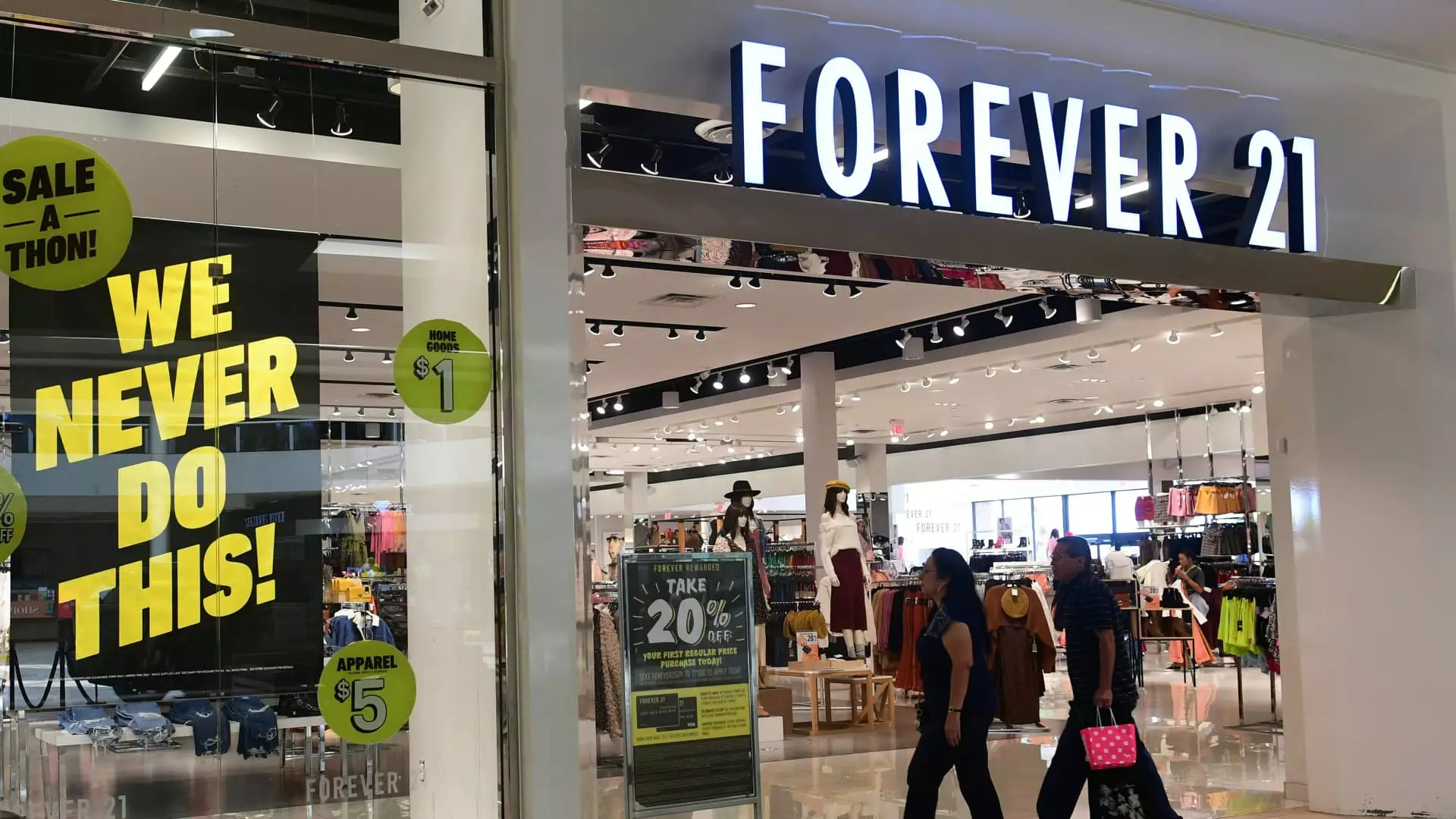Forever 21, once a titan in the fast fashion arena, is now grappling with existential challenges that threaten its very survival. Recent reports reveal that the retailer is in discussions with liquidators and is contemplating a second bankruptcy filing. While the company sought potential buyers for its leases and assets, these talks have now expanded to include liquidators as a safety net for compensating creditors should a buyer fail to materialize. This predicament underscores a broader story about how retail brands evolve, adapt, or falter in a rapidly changing marketplace.
In early January, Forever 21 announced it was actively exploring strategic options, aiming to emerge from financial disarray. The company has historically struggled with profitability issues, issues that have only intensified over recent months. With the competitive landscape shifting dramatically due to aggressive online players like Shein and Temu, the obstacles facing Forever 21 are becoming insurmountable. In an effort to streamline operations and cut costs, the company has previously sought substantial rent reductions from landlords, showing an acute awareness of its precarious financial health.
The involvement of Authentic Brands Group (ABG), which owns Forever 21’s intellectual property, presents another layer to the situation. While ABG has strengthened its portfolio through acquiring distressed assets, the management of Forever 21 is still a question mark. The operational dynamics between the brand’s ownership and its management complicate any potential for a straightforward buyer looking to reclaim and revive the brand’s previous glory.
As Forever 21 navigates these financial hurdles, it faces unique challenges from nimble competitors. Online-only retailers like Shein and Temu have revolutionized the fast fashion model by leveraging technology and AI to adapt to consumer preferences at lightning speed. This adaptability allows these e-commerce brands to respond to trends and manage inventory in ways traditional retailers, with their physical stores and legacy costs, cannot.
The intense rivalry has rendered Forever 21’s position more precarious than ever. Once celebrated for its trendy offerings, the brand now struggles to maintain relevance. Younger consumers are drawn to fast-fashion outlets that offer a more dynamic shopping experience, while Forever 21 attempts to redefine what it represents. Its partnership with Shein, which initially seemed promising, has not translated into the needed resurgence. Industry skepticism about Shein’s ability to make significant inroads into physical retail only compounds Forever 21’s challenges.
Forever 21’s first trip through bankruptcy protection in 2019 understandably aimed to restructure the organization and alleviate numerous financially burdensome leases. However, the realignment failed to establish a robust operational foundation. Despite new ownership that included Simon Property Group and Brookfield Property Partners, the brand has not effectively transformed to meet the demands of today’s fast-paced retail environment.
The once-favored fast fashion label has undeniably lost its competitive edge, overwhelmed by rivals equipped with sophisticated logistics and marketing strategies. The past few years have demonstrated that simply orchestrating a financial restructuring does not guarantee sustainability or relevance in the fast fashion sector.
With the discussion of potentially hiring liquidators now at the forefront, the grim prospects for Forever 21 become apparent. Liquidation would mean selling off store inventories and assets to pay back creditors, effectively marking the end of an era. However, there remains a flicker of hope. An acquisition of Forever 21’s assets—perhaps even a rebirth under different management or branding strategies—remains a conceivable outcome. The market has witnessed numerous retail turnarounds, particularly under the auspices of firms well-versed in brand revitalization.
Authentic Brands Group might salvage components of Forever 21’s identity or IP, but the real question is whether the brand can cultivate a fresh identity to attract a new generation of consumers who prioritize innovation and immediacy in their shopping experiences.
Forever 21’s current crisis reflects broader trends affecting traditional retail in an increasingly digital age. Its lineage from an influential fast fashion giant to a struggling contender illustrates the relentless evolution of consumer preferences and market dynamics. As it faces potential liquidation or reformation, the story remains a cautionary tale for other retailers—a reminder that digital agility and modern strategies have become non-negotiable in the ever-competitive world of retail. The actions Forever 21 takes in the coming months will determine if it can adapt and survive or if it will succumb to the pressures that have claimed countless others in recent years.

